When browsing the internet, you may come across various technical terms or jargon that are unfamiliar to you. Understanding these terms is essential for navigating websites and comprehending their content effectively. This is where a website glossary comes in handy.
If you're wondering how does a glossary look like, here are some examples of a good glossary website pages:
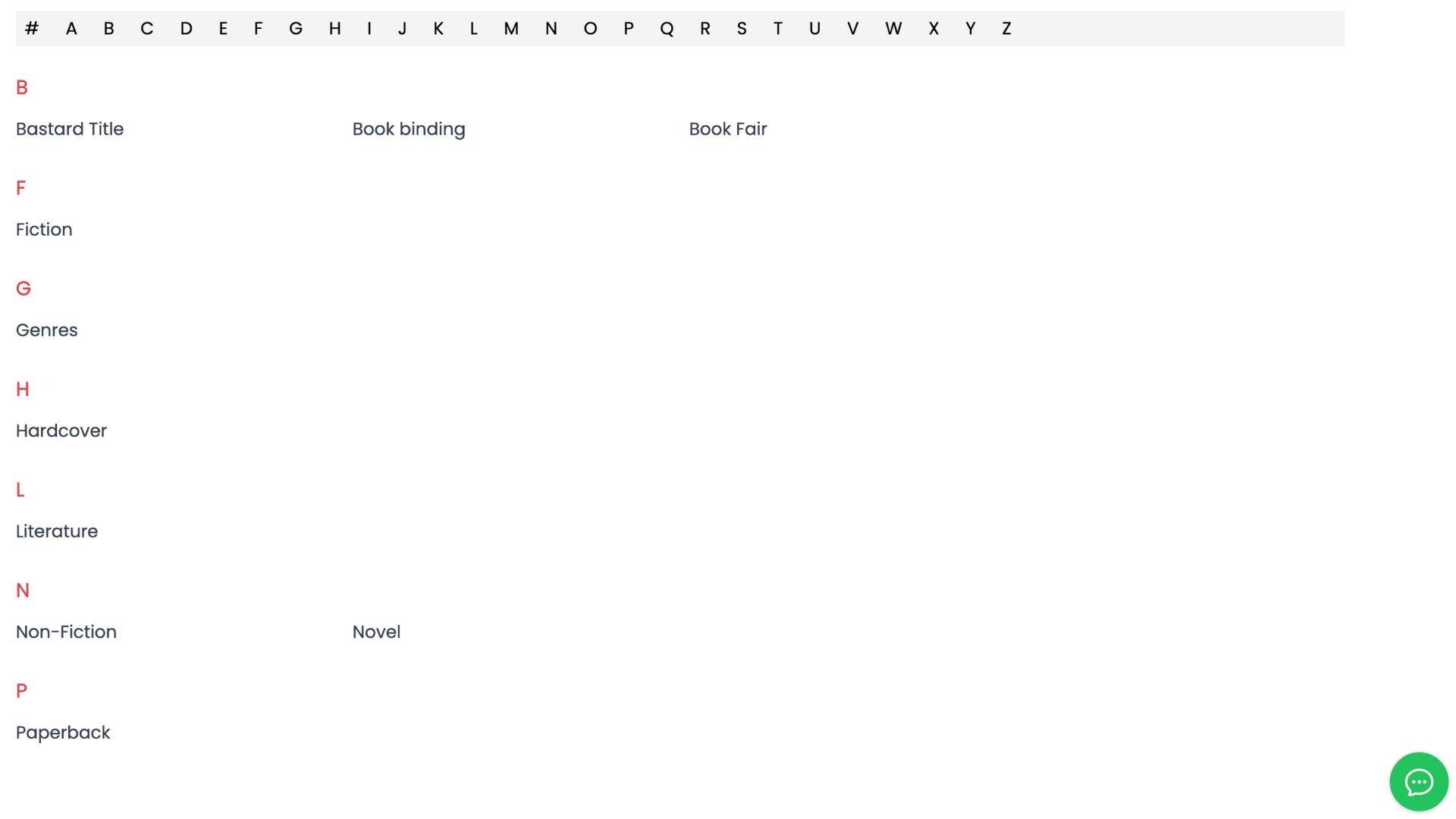
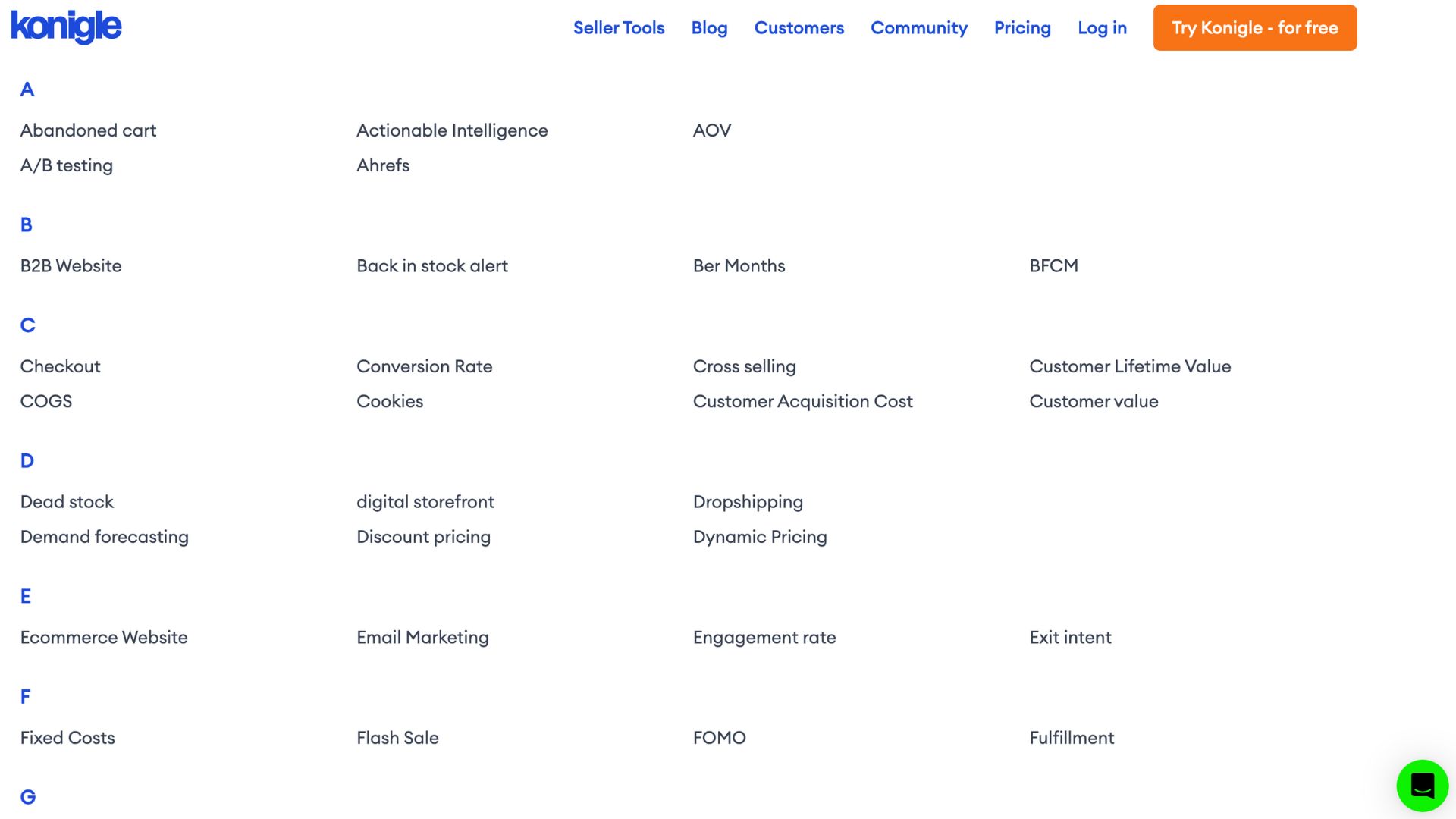
Is populating terms for your website glossary time-consuming? Here are two solutions Konigle have for you.
Method 1: Konigle's Keyword Tool
Identify Key Terms
Identify the key terms you want to include, typically specific to your website's niche or industry. Consider the terms that your audience may be unfamiliar with or those that have multiple interpretations.
1. After writing your content, use the ‘Keyword’ tool to extract plausible keywords based on your content.

2. Filter through the extracted keywords and deselect less relevant keywords. Click ‘Insert and save’ to automatically generate them as Glossary terms.
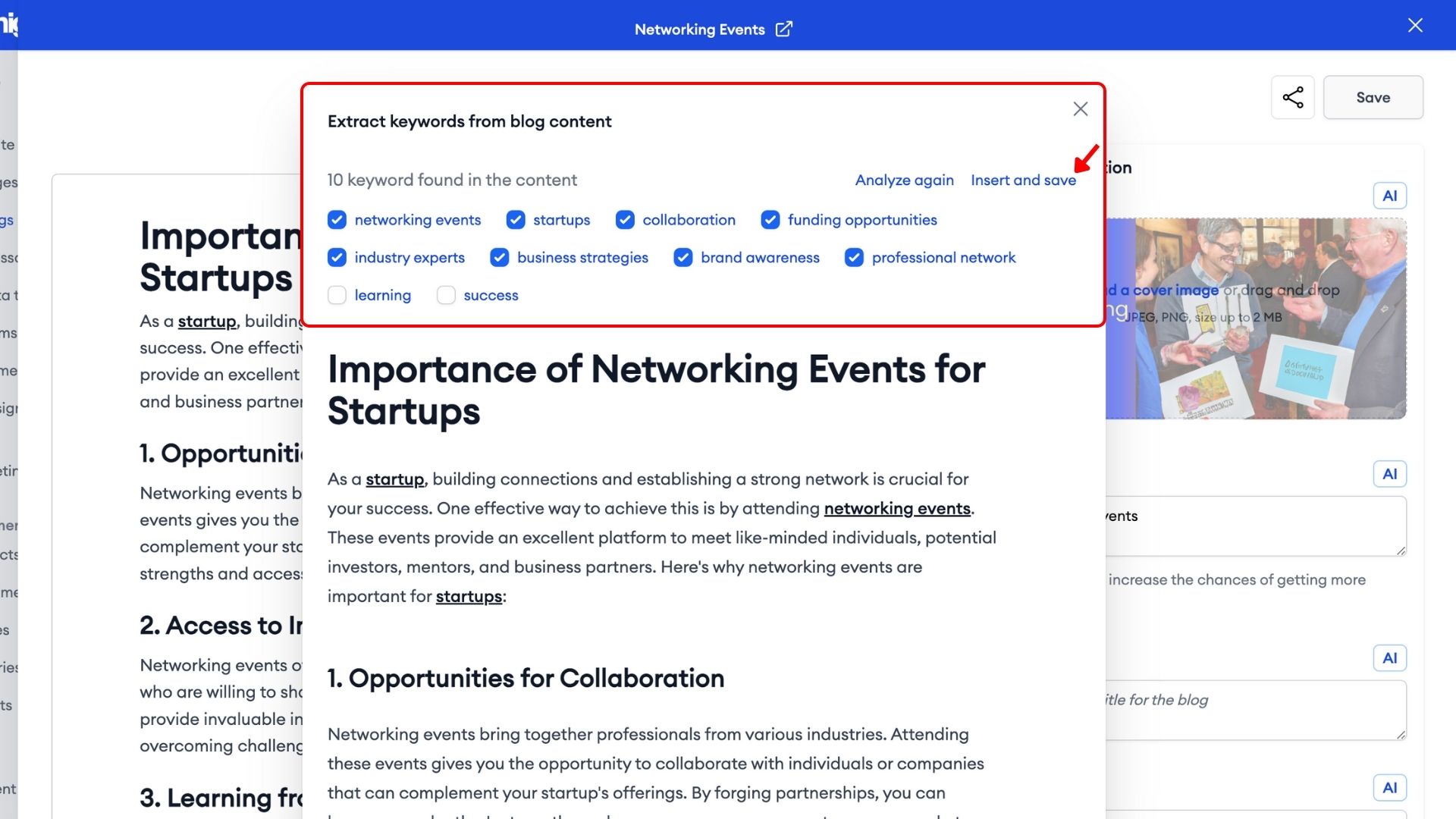
3. With this tool, you can generate multiple keywords with just one click. These keywords are even back-linked to your article!
Interested? Reach out to us and get a free demo of our website builder today!
Method 2: Manual Addition
1. From your Konigle dashboard, go to Website > Glossary > New glossary term > Create manually.

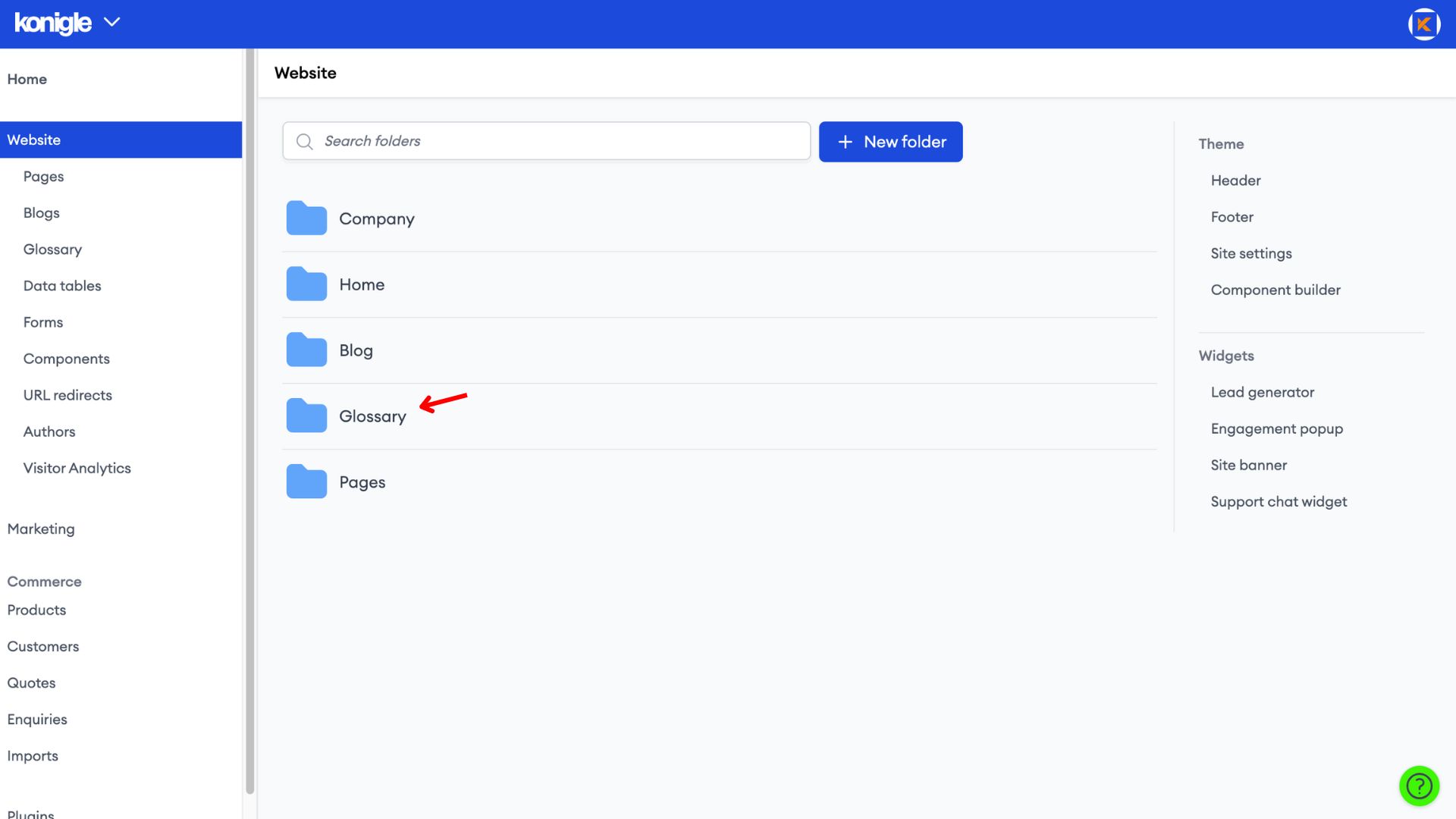
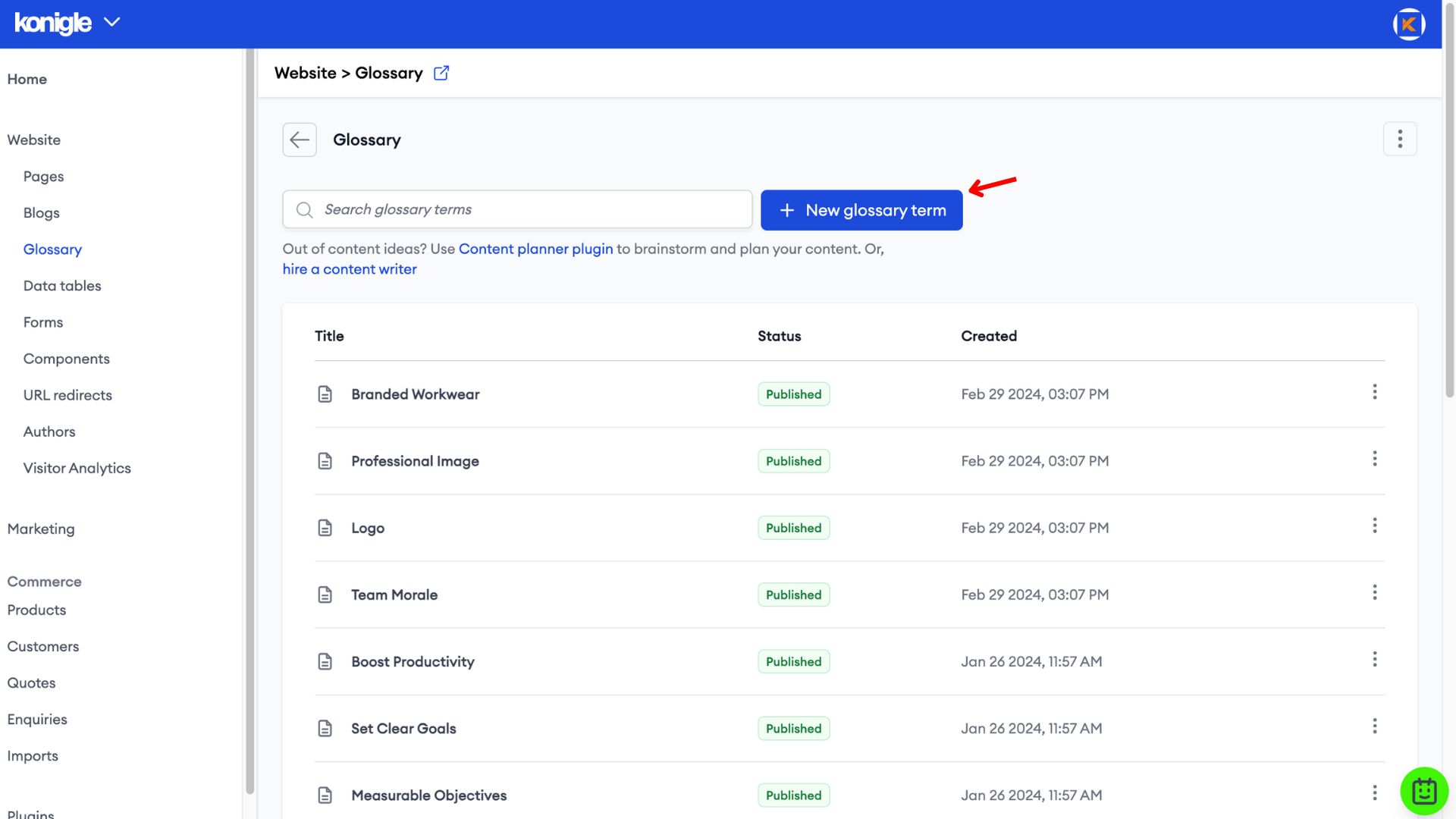
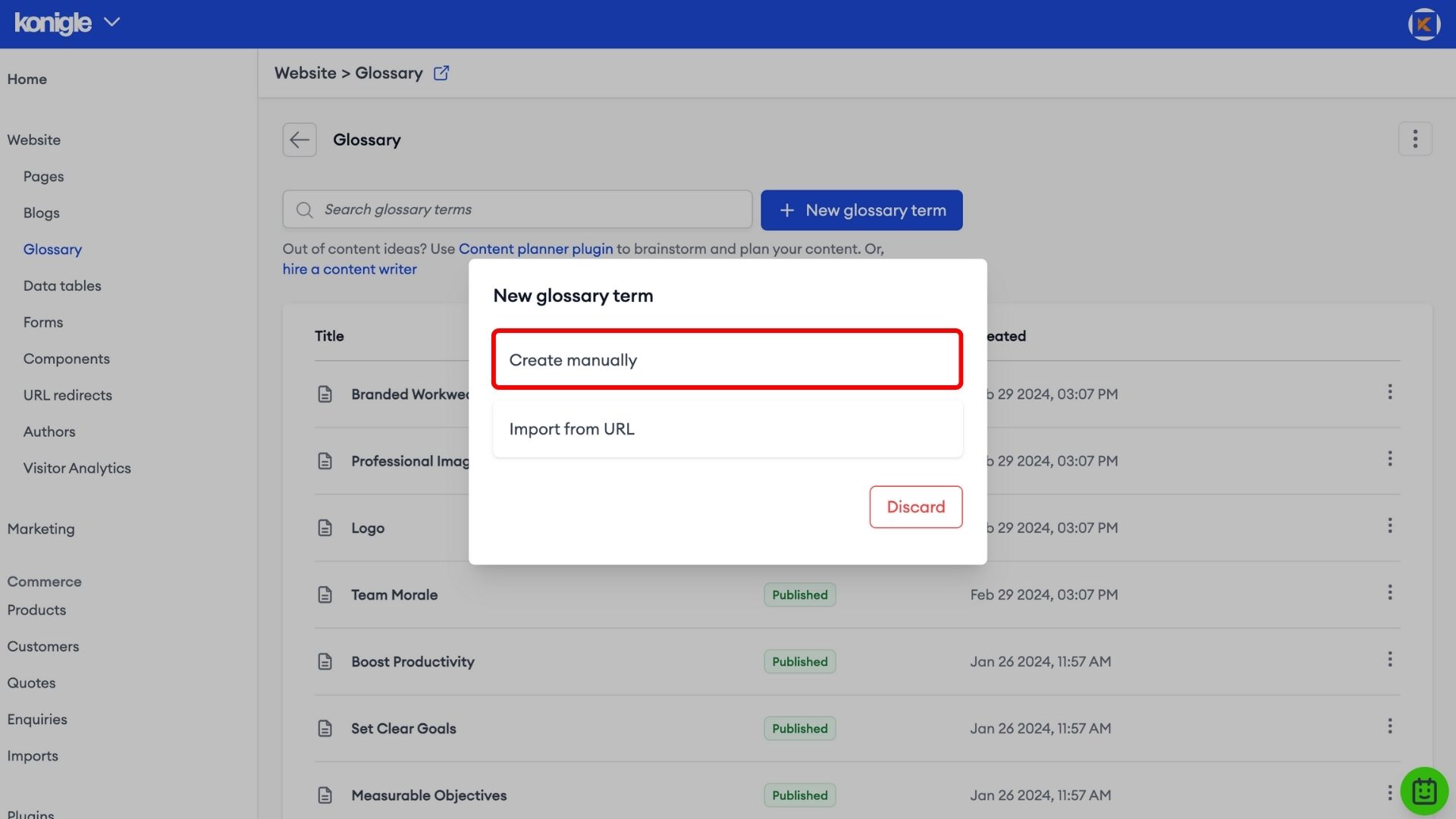
2. Enter a Glossary title and ‘Create’.
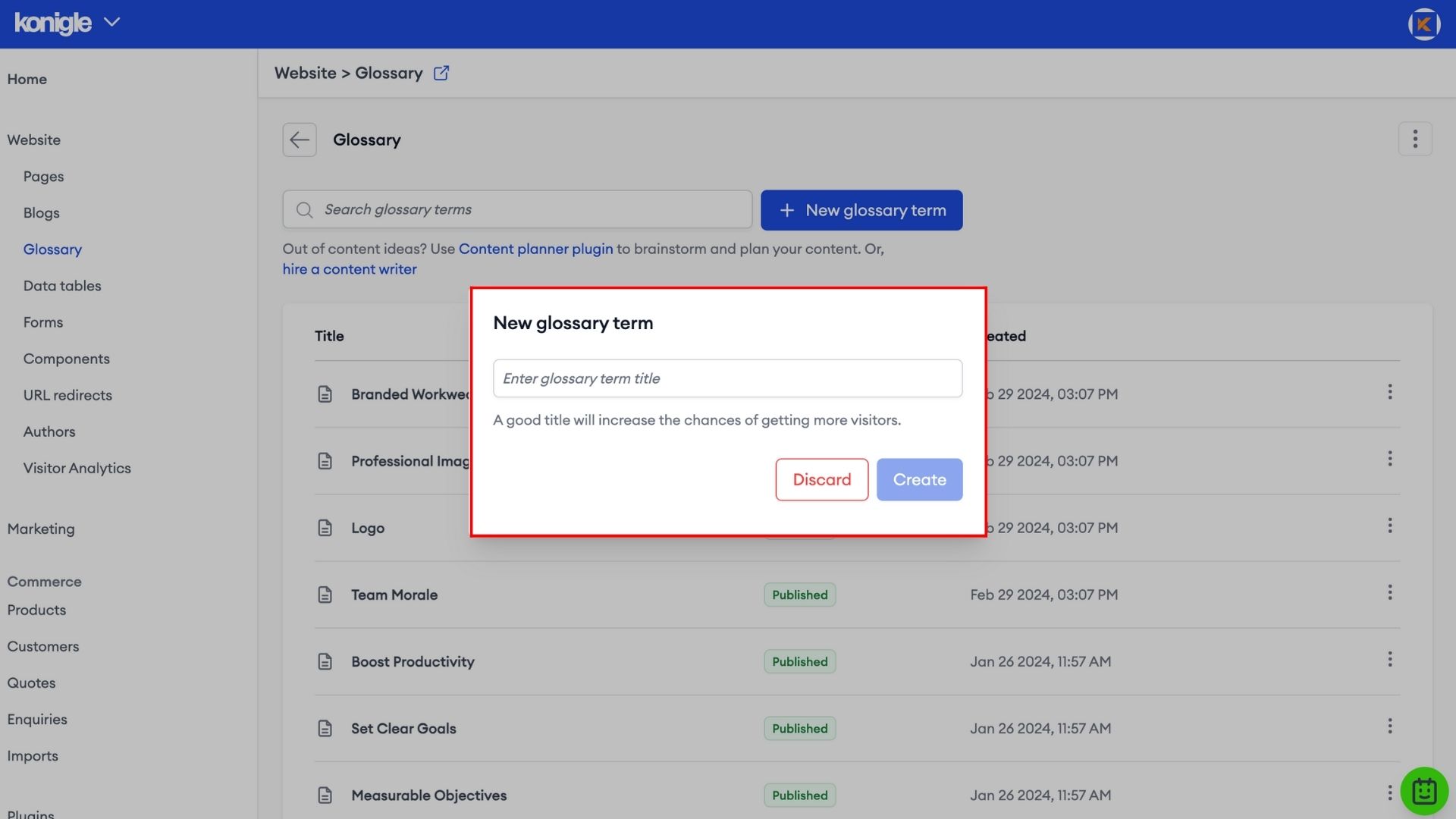
3. Make use of AI to generate content by clicking on ‘Generate’.

4. Provide information on what content is to be generated, click ‘Generate’ for AI to start writing.
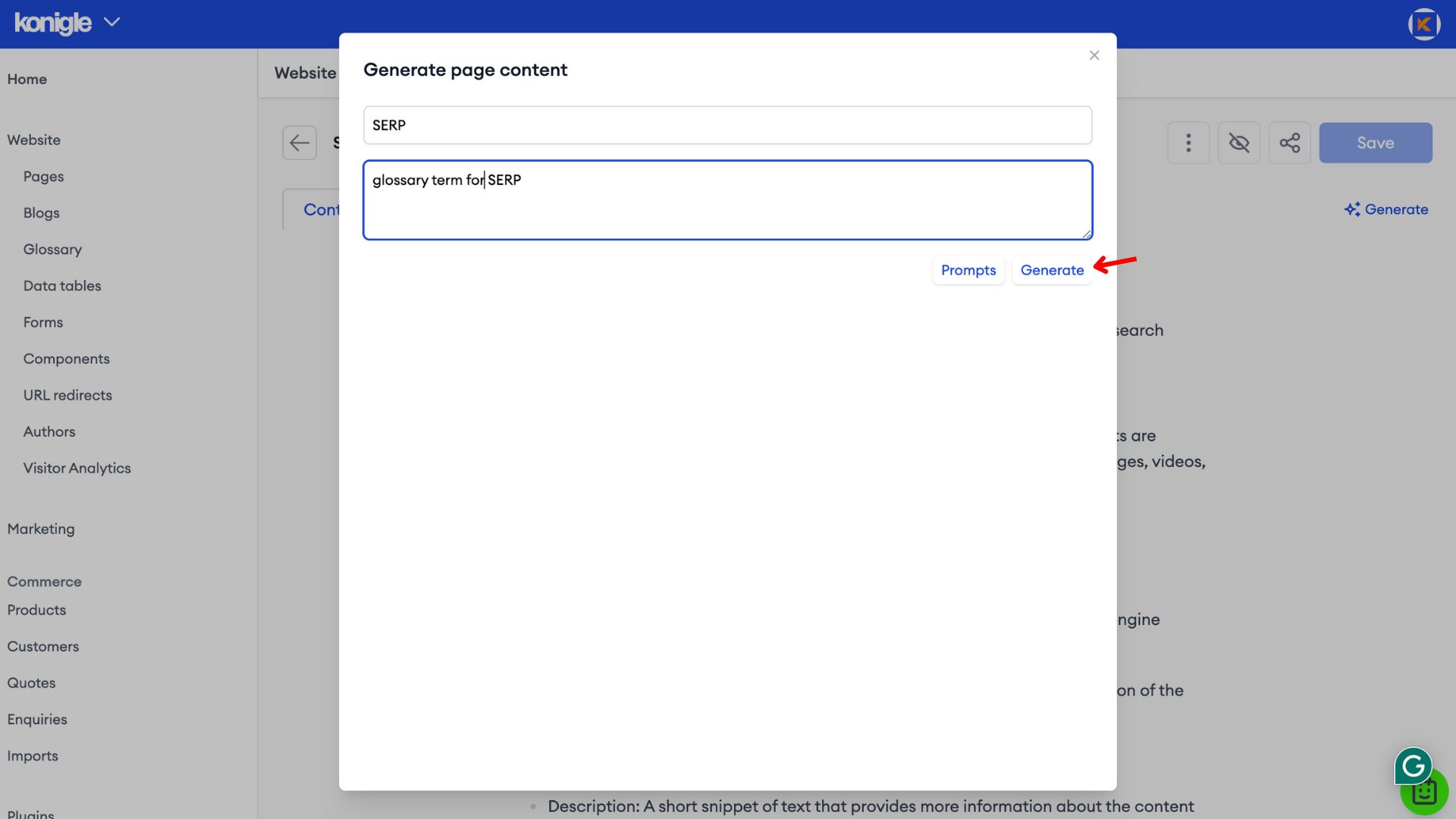
5. Click ‘Save’ to insert the generated content into the body.
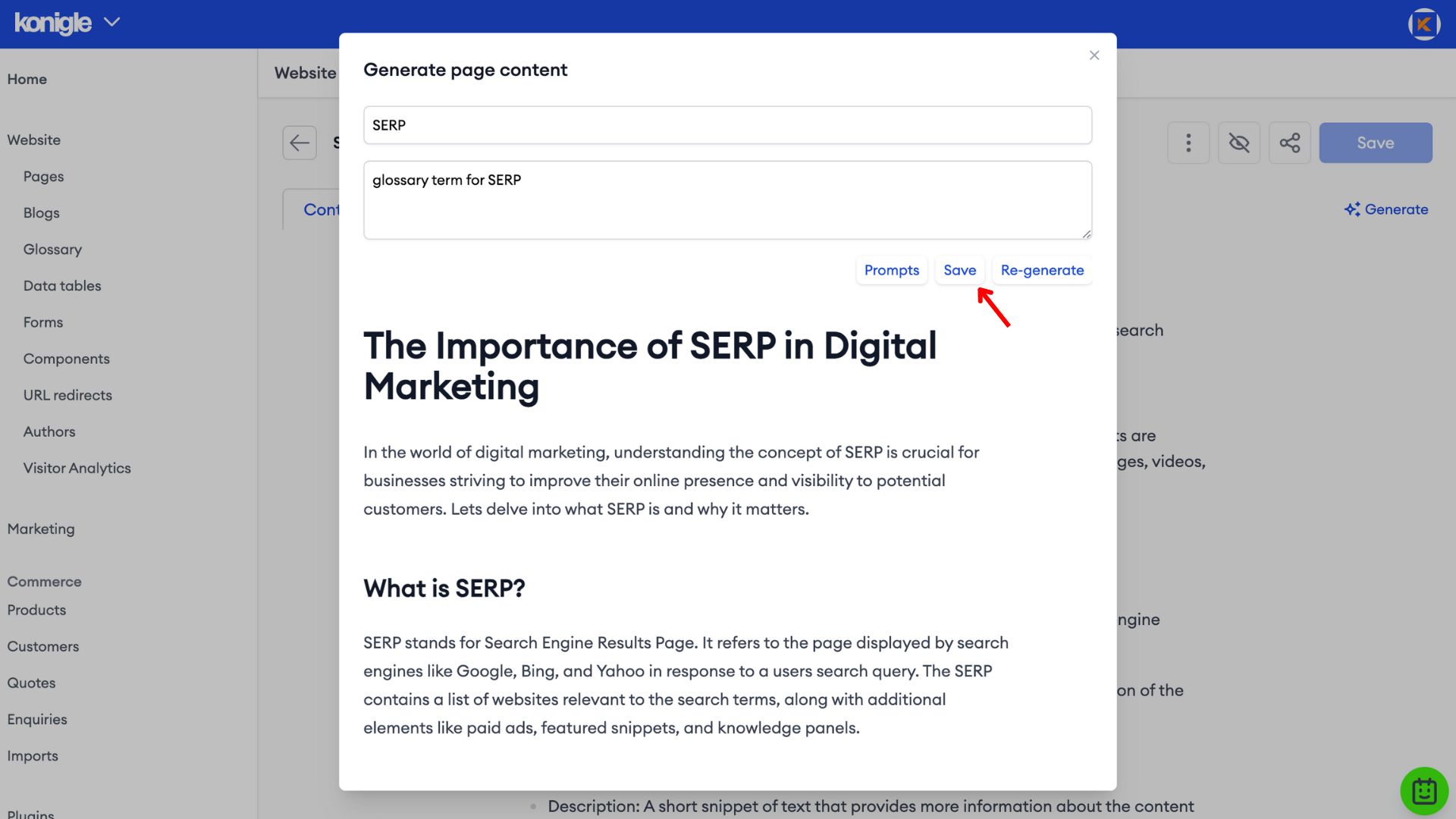
Link Terms to Definitions
To make the glossary easily accessible, link each term within your website's content to its corresponding definition in the glossary. This allows users to quickly access the definition without navigating away from the page they are on.
If you have generated keywords the ‘Konigle’ way with our Keyword tool, your glossary terms would have already been back-linked to your blog. How convenient!
Implementing the Glossary on your website
When formatting your glossary, organize it in a user-friendly manner. To create a website glossary, you will usually need to install additional plug-ins on website builders like WordPress. Or add new sections and elements for the glossary on wix.com.
These are not needed for websites built on Konigle as every website comes with a Blog and Glossary and both can be easily unpublished if not required.


Keep it Updated
A website glossary should be a dynamic document that evolves along with your website's content. It is important to regularly review and update your glossary to maintain its accuracy and relevance. You should consider adding new terms as your website expands and removing obsolete terms that are no longer applicable.
Here's a video guide on how to create a Website Glossary on your website built with Konigle:
What is a website glossary?
A website glossary is a compilation of definitions or explanations for terms and phrases used on a specific website. It serves as a valuable reference tool for visitors who might encounter unfamiliar vocabulary while browsing the site. The glossary helps bridge the gap between the website's content and the user's level of knowledge.
Why is glossary important?
If you're wondering “Should my website have a glossary?”, here are 5 reasons why you should have a website glossary:
1. Enhances User Experience
A website glossary enhances user comprehension. By including a glossary, you ensure that all users can understand your content, regardless of their prior knowledge. This saves them time and effort in searching for external explanations and improves their overall experience on your website.
2. Promotes Engagement and Retention
An interactive glossary with hyperlinked terms can keep users engaged and encourage them to stay longer and explore more of your website. Increased engagement and retention lead to a higher likelihood of conversions or achieving the goals you have set for your website.
3. Establishes Authority
Having a well-curated website glossary helps establish your website as a credible and authoritative source of information. When visitors see that you have taken the time to define and explain terms, they are more likely to trust your content and consider you an expert in your field.
4. Improves SEO
Including a glossary on your website can also have a positive impact on your search engine optimization (SEO) efforts. Each definition within the glossary is an opportunity to include relevant keywords, improving the visibility of your website in search engine rankings. Additionally, the glossary creates more internal linking within your website, further enhancing its search engine performance.
5. Grow faster and boost sales
All four benefits mentioned above will ultimately result in faster growth and increased sales for you. When your website can reach a wider audience, traffic increases. When you provide visitors with sufficient incentives to convert, sales increase.
